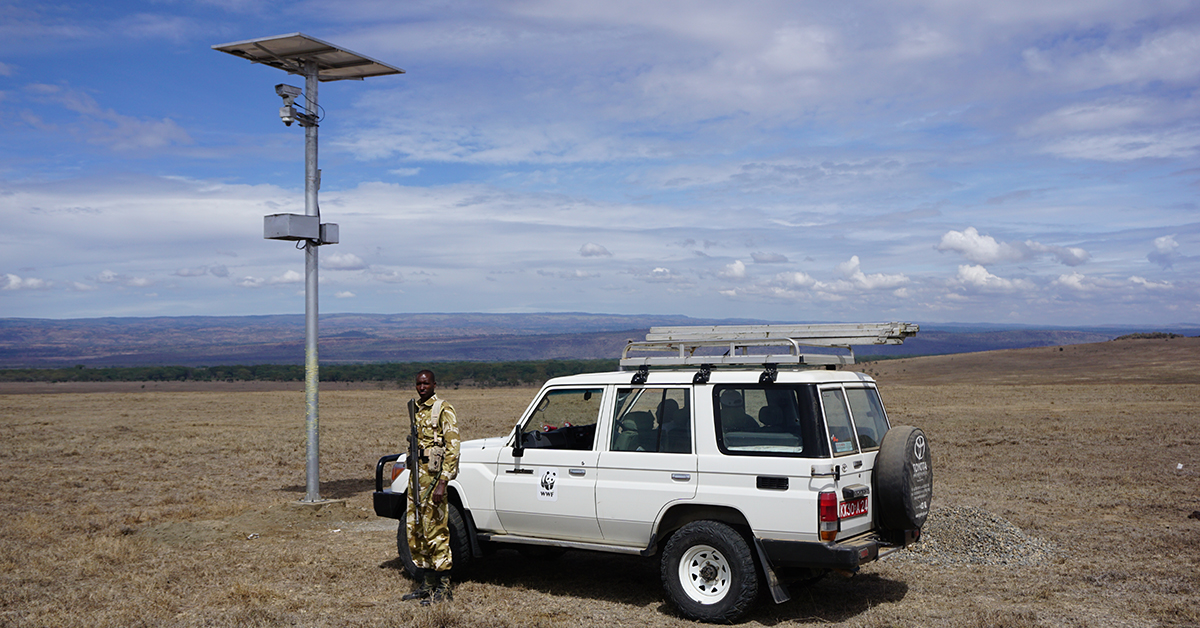
There are several conservation-focused organizations such as World Wildlife Fund (WWF), World Animal Foundation (WAF), and the Sierra Club that offer symbolic wildlife adoption programs, enabling interested donors to pick an endangered species, whether it's a dolphin, cougar, humpback whale, or tarantula. Some organizations even offer specified "adoption" opportunities, such as SeaTurtle.org or Oceanic Society, which are solely for marine life.
The different beneficiaries from this project are multiple, such as the endangered animal species who benefit from more protection thanks to more means. Donators, who have the possibility to "adopt" a wild animal and track them in real time. Finally, the last main beneficiaries are the different organizations which carry thoses projects and therefore, beneficiate from more funds through private donations and can in the meantime protect those endengered species more effectively.
The users of this project are almost the same as the beneficiaries, since the main users are the people donating to "adopt" an animal and the organizations who carry those projects because they can get more funds from this.
This project answers two main needs related to the issue of fighting against the trafficking of protected animal species. The first one answered is the need for conservation-focused organizations, such as WWF, to get more funds to protect endangered animal species. The other one is the need for every human to be able to participate in the conservation of protected animal species and fighting against their trafficking.
The solution offered to answer those needs is the possibility for everyone, every human being to adopt an animal through a donation to a conservation-focused organization so that they can get additional funds to protect those animals.
The main technologies used in this project are GPS tracking systems that enable have in real time the approximate position of the animal on a map. Then we also have APIs that enter in the game along with payment systems; for instance, the API of the organization website exchange information with another API of the payment system provider to make the donation process possible.

This project is being carried by a company called Cobham which is a leading global technology and service innovator, supported also by WWF.
The beneficiaries of this project are the organizations that have a focus on the protection of endangered animal species, since it provides them with another tool to protect those species.
Finally, the last beneficiaries from this project are obviously the animals since the system developed by Cobham allow to maintain a 24/7 surveillance of their natural habitat, which therefore prevent thel from being hurt by traffickants.
As for the users, the Tactical Communications and Surveillance system is mainly used by the conservation-focused organizations such as WWF to watch 24/7 the different species they have to protect.
The needs that are being answered thanks to this project are the following :
- The need for animal protection organizations to be able to watch and maintain surveillance upon different animal species at a lower cost in terms of resources and more efficiently
- The need for animals to prevent animal trafficking
It is an automated waterhole surveillance system with 24/7 live video streaming, that allows to watch for animal species, espescially those living in the water.
The main technology involved in this project is the live video streaming one since this is this one which makes the surveillance and the project possible.

The carriers of this project are mainly WWF, a conservation-focused for animal protection organization, and Google which participates to create the world largest camera trap database.
The beneficiaries of this project are obviously the protected animal species and the conservation-focused organizations which benefit from huge amounts of useful data to better protect animals.
The users of this project are NGOs, governments and citizen scientists since they can upload, analyze, and share their camera trap photos with the conservation community. In addition to this, there is also the different conservation-focused organizations which use all this data to better protect animals.
The different needs adressed by this project are the following :
- the need for useful and complete databases about the environment and daily life of protected animal species
- the need for even better protecting endangered animal species
Equipped with cutting edge artificial intelligence technology, Wildlife Insights can automatically identify hundreds of wildlife photos in minutes, a task that traditionally takes researchers weeks or months to complete. Now scientists can access photos and data on any device, whether in an office or out in the field. By sharing data in one place, Wildlife Insight is helping to facilitate collaboration and answer larger conservation questions.
This project uses several technologies such as thermal cameras and camera traps, as well as databases and some artificial intelligence technology that helps identifying quickly huge amounts of wildlife photos taken by the cameras.
The project carriers are WWF and United for Wildlife which are two conservation-focused organizations.
The main beneficiaries are obviously the animals that need to be protected and the organizations that protect them since this community gather data and ideas to innovate and have a better protection system.
The users of this project are multiple, indeed, there are NGOs, governments, technologists, engineers, data scientists, entrepreneurs, change makers and conservation-focused organizations.
The needs answered by this project are the following :
- The need for innovation in the protection of endangered animal species
- The need to access useful and numerous resources about protected animal species
WILDLABS.NET is a community of conservationists, technologists, engineers, data scientists, entrepreneurs and change makers. Together, they share information, ideas, tools and resources to discover and implement technology-enabled solutions to some of the biggest conservation challenges facing our planet.
The main technologies involved in this project are the following :
- APIs to link and extract relevant posts from social media
- Databases to keep up with the different data they want to track

The carriers of this project are mainly WWF, a conservation-focused for animal protection organization, and Google which participates to create the world largest camera trap database. In addition to this their is also other actors in this project which are the user of WildLife Insights since they participate in building the project.
How AI can help organizations fighting against protected animals trafficking, in the analysis of Wildlife photos ?
I have selected this project because it shows that the use of artificial intelligence helps taking decisions and innovate to improve the protection of endangered animal species. In addition to this, I selected this project also because it involves a lot of different actors, which allows a bigger amount of people to participate in the protection of these animals.
The users of this project are NGOs, governments and citizen scientists since they can upload, analyze, and share their camera trap photos with the conservation community. In addition to this, there is also the different conservation-focused organizations which use all this data to better protect animals.
First name : Henri
Age : 45 years old
Profession : Engineer
Place of residence : Paris
Family status : Maried with 2 children
Income : 60K€ per year
Hobbies and passions : Loves to take his dogs for a walk in the forest, loves animal in general and loves photography
Desires & dreams : Wants to build and open a natural sanctuary for wild animals in Africa after retirement
Frustrations : Too busy to spend his time to protect animals on the field, and doesn't have enough money to quit his job and make his dream come true
- Take/download wild animals pictures
- Upload pictures on Wildlife Insights
- Analyze pictures
- Share results with the community
To briefly describe how the project works technically, Wildlife Insights is based on a cooperation and communitarian activities. Indeed works as a huge database for in which the uploaded pictures are identified, analyzed and sorted thanks to an AI technology, so that only data related to Wildlife is accepted.
As far as I analyzed the existing project, I haven't identified any use of API in the operation of Wildlife Insights. But I feel like at least one could be applied to it.
Indeed, since this project is a huge database based on public sharing of data about Wildlife and on an Artificial Intelligence technology, I thought about an API that could be linked to the API of plateforms and social media that are subject to contain Wildlife content such as photos or articles.
How could it work ? First, the API of the project should be linked to APIs of several social media such as Twitter or Instagram and scientific plateforms/blogs such as Nat Geo Wild, etc.
Then, the API will be triggered by common and specialized #Hashtags such #Animals, #Wild, #Nature, for instance.
Then, after having identified those #Hashtags, and thanks to the AI technology carried by Wildlife Insights, the different data collected will be gathered, analyzed and finally shared (or not) on the plateform.
In the end, the implementation of this API will allow the database to get richer and therefore indirectly help better understand and protect endangered animal species.
As mentioned in the previous section the API version I would like to implement in Wildlife Insights would help improve the database content in terms of quantity and quality since it will be able to extract and sort data from several sources (social media and scientific blogs/platforms) with the help of their AI technology.
In short it will help automatising the enrichment of the database.